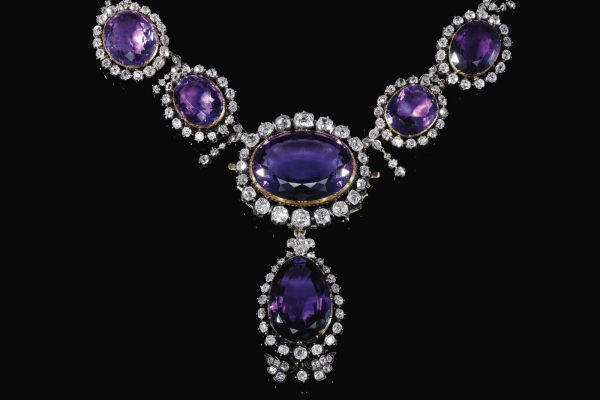 |
| Sotheby’s |
In my mind, there are few things more regal than a classic demi-parure of royal purple amethysts. Today, we’ve got a closer look at Queen Amalia’s Bavarian Amethyst Parure, which was worn by queens in both Germany and Greece.
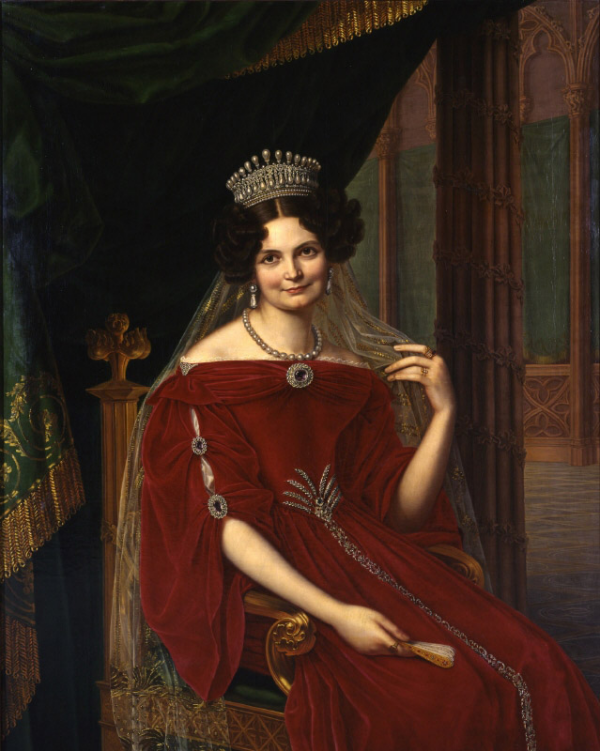 |
| Queen Therese of Bavaria (Wikimedia Commons) |
The first recorded owner of the amethysts was Therese of Saxe-Hildburghausen, a German princess who married Crown Prince Ludwig of Bavaria in 1810. (Their wedding was the very first Oktoberfest celebration.) They became King Ludwig I and Queen Therese of Bavaria on the death of his father, King Maximilian I Joseph, in 1825. In the portrait above, painted by Carl Joseph Begas in the late 1820s, Queen Therese appears to be wearing some of the amethyst clusters from the suite as ornaments on her gown. She’s also wearing the famous Bavarian Lover’s Knot Tiara.
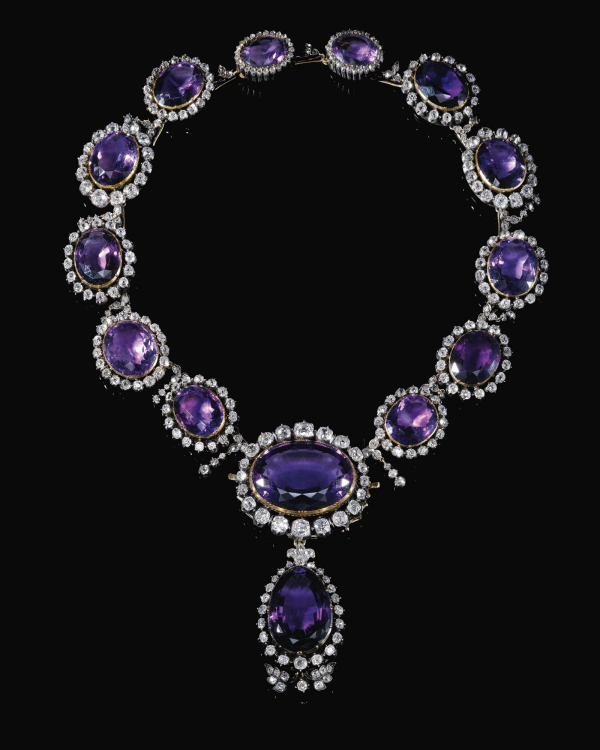 |
| Sotheby’s |
Queen Therese’s amethysts were eventually set as a necklace, which was later described by Sotheby’s as “a graduated series of oval amethysts each set within a frame of cushion-shaped and circular-cut diamonds, suspending a detachable amethyst and diamond pendant.”
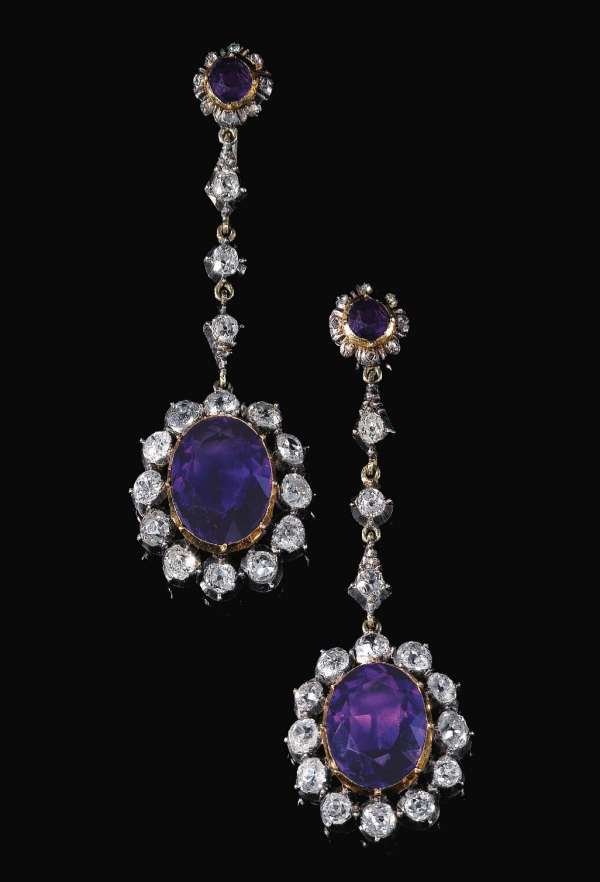 |
| Sotheby’s |
At some later point, some of the amethysts were removed from the necklace and used to create a pair of coordinating earrings, making a demi-parure of jewels.
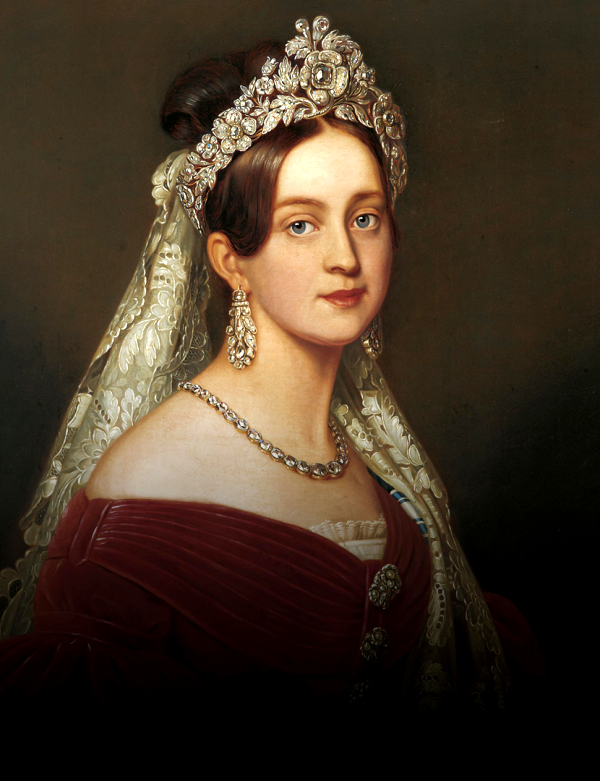 |
| Queen Amalia of Greece (Wikimedia Commons) |
Queen Therese bequeathed her amethysts to her second son, Otto. In 1832, he had been elected King of Greece, and he reigned in the country for thirty years before he was deposed. At his side was his wife, Duchess Amalia of Oldenberg, who became Queen Amalia when they married in 1836. For generations, the family associated the amethyst suite with Amalia, even calling it simply “Queen Amalia’s Parure.”
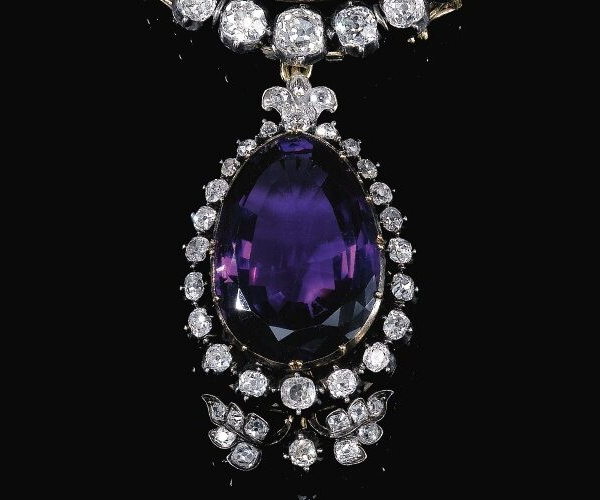 |
| Sotheby’s |
Otto and Amalia had no children of their own, and after her death in 1875, the amethysts were passed down to Otto’s nephew, Prince Ludwig Ferdinand of Bavaria. He may be best remembered for his marriage to Infanta Maria de la Paz of Spain, a daughter of Queen Isabella II. Ludwig Ferdinand and Paz’s branch of the family is often called the “Spanish branch” of the Bavarian royal line. (One of her wedding gifts was the unique Bavarian Sunburst Tiara.)
Next, the amethysts were bequeathed to Ludwig Ferdinand and Paz’s second son, Prince Adalbert, who in turn left them to his eldest son, Prince Konstantin. He bequeathed them to his eldest son, Prince Leopold, who made a name for himself as a race car driver. Nicknamed “Poldi,” he was raised in the household of his maternal grandparents, Prince Friedrich and Princess Margarete of Hohenzollern. Through them, he met one of his closest royal friends, King Carl XVI Gustaf of Sweden. (Leopold’s uncle, Prince Johan George of Hohenzollern, was Carl Gustaf’s brother-in-law.) Leopold is even a godfather of Prince Carl Philip of Sweden, who shares his passion for racing.
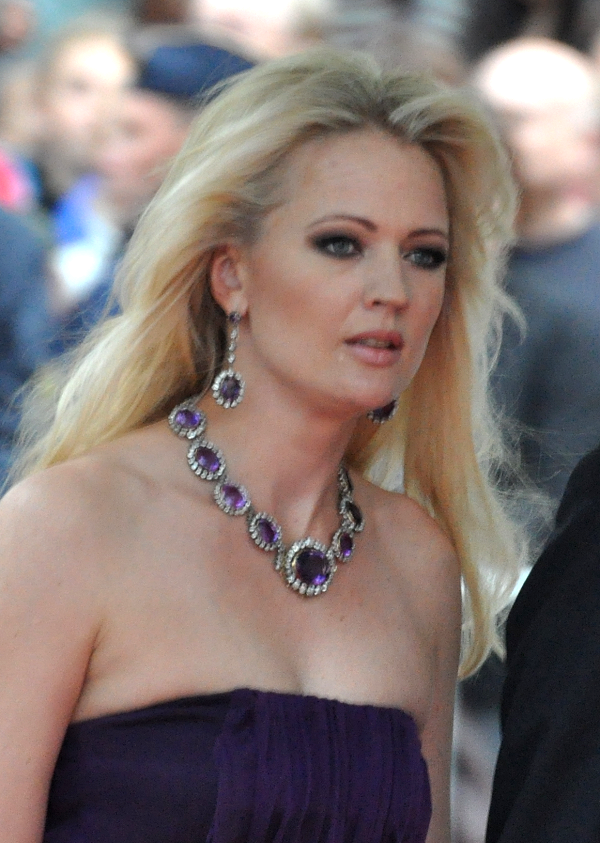 |
| Princess Anna of Bavaria, 2010 (Wikimedia Commons) |
The family’s Swedish royal friendship means that they’re often pictured at royal events in Stockholm, and the amethysts made a few appearances over the years. Above, Leopold’s daughter-in-law, Princess Anna, wears the suite for the gala performance held the night before Crown Princess Victoria of Sweden’s wedding in June 2010. Four years earlier, Leopold’s wife, Princess Ursula, wore the amethysts for King Carl XVI Gustaf’s 60th birthday celebrations.
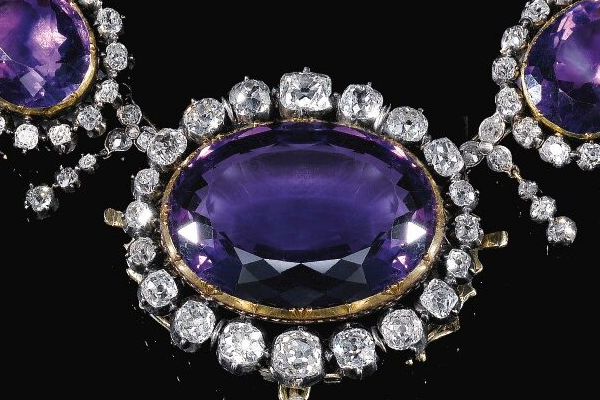 |
| Sotheby’s |
In 2013, however, Leopold and Ursula decided to part with some of their heirloom royal jewels, including Queen Amalia’s amethysts. (The sunburst tiara was also sold.) The necklace and earrings were auctioned at Sotheby’s in Geneva that May. The set sold for more than $140,000 USD, significantly exceeding their auction estimate.
Leave a Reply